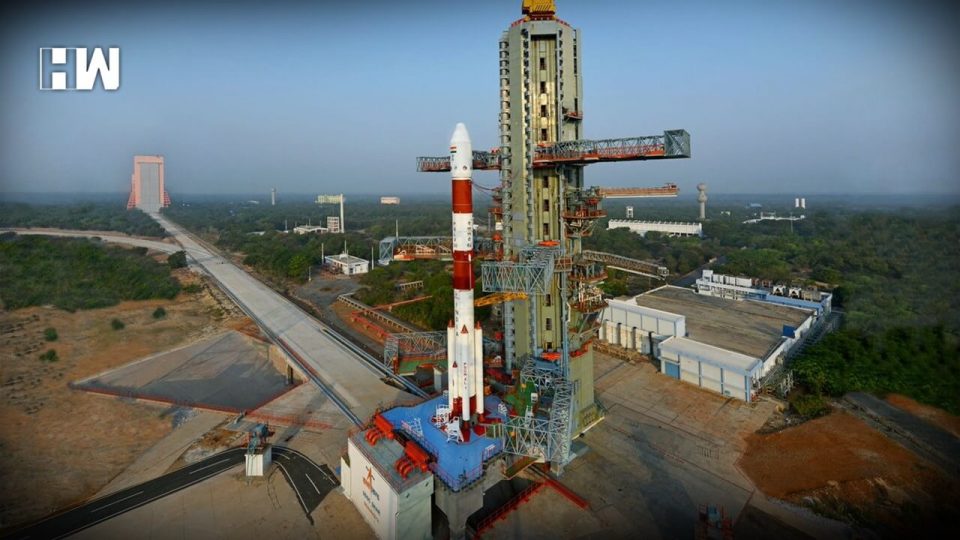New Delhi | Indian Space Research Organisation (ISRO) today launched an Electronic intelligence satellite EMISAT along with 28 other nano satellites of other customers from the Satish Dhawan Space Centre in Sriharikota at 9.27 am
The launched satellites include India’s EMISAT, 24 of America, 2 Lithuania and 1-1 are from Spain and Switzerland. This is the first time that ISRO will install equipment in three different orbit in one campaign. The low-Earth orbit satellite that weighs 436 kg, will monitor and give locations for enemy radar sites deep in their territory.
Speaking about the launch Isro chairman K Shivan said,”The immediate mission what we are targeting is the PSLV C-45. This mission is special in the sense, for the first time PSLV will have a three-orbit mission in a single flight.”
The launch of the EMISAT has come just days after India test-fired an anti-satellite (ASAT) missile in the Mission Shakti operation. ISRO also for the first time invited common people to view the launch of any of its mission
According to ISRO, a new variant of the rocket PSLV-QL equipped with four Strap-On motors in the first stage is used for the launch. PSLV, also used in India’s two key missions — “Chandrayan” in 2008 and Mars Orbiter in 2013, is a reliable and versatile launch vehicle for ISRO with 39 consecutive successful flights till June 2017 and five-in-a-row from January 2018.
The rocket has encountered only two failures so far — its maiden developmental flight ended unsuccessful way back in 1993. In September 2017 the flight went off without any hitch but the IRNSS-1H Satellite could not be released into orbit after the PSLV-C39’s heat shield failed to open on reaching the orbit.
In today’s mission, ISRO scientists would place the satellites and payloads in three different orbits, a first for the agency. After injecting the 436 kg primary satellite EMISAT, intended for electromagnetic spectrum measurement, at around 17 minutes from lift off in a 749 km orbit, they would restart the fourth stage again.
During this initiative, all the other 28 customer satellites, totally weighing about 220 kgs, would be released by lowering the fourth state to around 504 kms orbit. Again, the fourth stage would be reignited and further lowered to 485 kms orbit to serve as an orbital platform for carrying out space borne experimentations for the first time in ISRO’s history.
According to ISRO, this is the first time it has been envisaged to provide a micro-gravity environment for research organisations and academic institutes to perform experiments. The PS4-fourth stage hosts three payloads in this mission.
They are automatic identification system from ISRO for Maritime satellite applications capturing messages transmitted from ships. Automatic Packet Repeating System from AMSAT (Radio Amateur Satellite Corporation), India to assist amateur radio operators in tracking and monitoring position data.
Advanced Retarding Potential Analyzer for lonospheric Studies (ARIS) from Indian Institute of Space Science and Technology (IIST) for the structural and composition studies of ionosphere.
The other 28 international satellites — 25 3U type, two 6U type and one 2U type nano satellites — are from Lithuania (two), Spain (1), Switzerland (1) and the United States (24). All these satellites are being launched under commercial arrangements, ISRO said.
The previous launches by ISRO this year include the imaging satellite Microsat-R for military purpose along with 1.2 kg Kalamsat in January onboard PSLV-C44.
In February, ISRO launched India’s communication satellite GSAT-31 from the European launch service provider Ariane from French Guiana.
With Inputs from Agencies..
As an independent media platform, we do not take advertisements from governments and corporate houses. It is you, our readers, who have supported us on our journey to do honest and unbiased journalism. Please contribute, so that we can continue to do the same in future.

